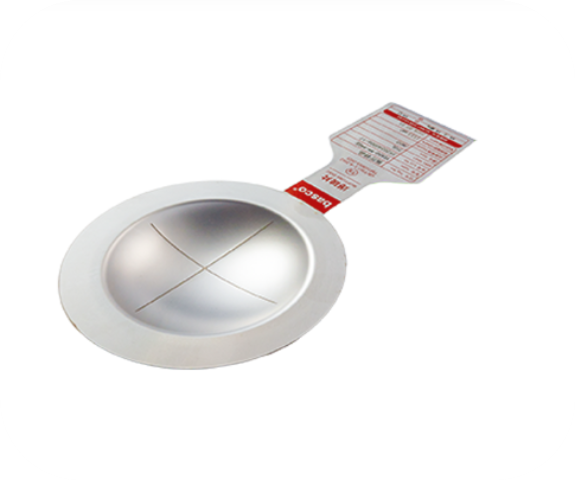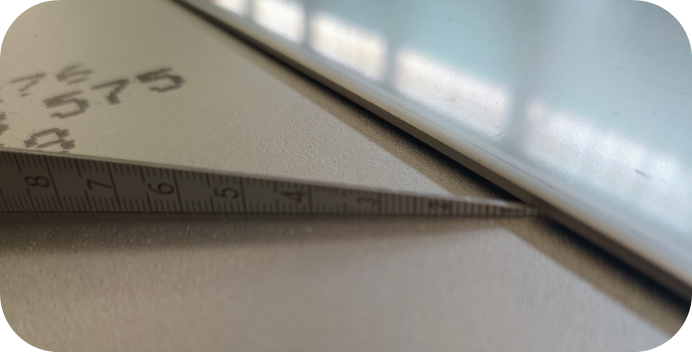The Hidden Line of Defense Under High Pressure: Exploring the Rupture Disc Industry
In various industrial sectors such as chemical, petroleum, and natural gas, high-pressure, high-temperature, flammable, explosive, or toxic environments are prevalent. Ensuring the safe and stable operation of these complex systems is of paramount importance. As a critical pressure relief device, the rupture disc quietly safeguards the front lines of production. Today, we will delve into the mysteries of rupture discs.
1. What Is a Rupture Disc?
A rupture disc, also known as a burst disc or explosion vent, is a single-use overpressure relief device typically installed at predetermined weak points in pressure equipment or pipelines. When internal pressure rises sharply beyond the rupture disc’s threshold, it bursts instantaneously, opening a relief passage and releasing the high-pressure medium inside the container. This prevents catastrophic incidents such as explosions or deformations due to overpressure, thereby protecting personnel, equipment, and the surrounding environment.
Compared to traditional safety valves, rupture discs offer advantages such as rapid activation, high discharge efficiency, and superior sealing performance. They are particularly suited for applications where rapid pressure surges occur, where the medium is highly corrosive, or where safety valves may become clogged.

2. How Does a Rupture Disc Work?
The core principle of rupture discs is based on material mechanics and pressure equilibrium. Under normal operating conditions, the rupture disc withstands both internal and external pressures (typically atmospheric pressure) while maintaining a sealed state due to its inherent strength and structural integrity.
However, if internal pressure spikes due to process failure, fire, or abnormal chemical reactions, the force exerted on the rupture disc’s surface increases. Once this force reaches the pre-designed rupture pressure, the material undergoes plastic deformation, stretches, and ultimately ruptures. The high-pressure medium then rushes through the opened gap, rapidly reducing the pressure back to a safe range.
3. Quality Requirements for Rupture Disc Surfaces
As a "safety valve" in critical moments, the quality of the rupture disc’s surface is crucial to the precision and reliability of the entire pressure relief system.
● Microscopic Flatness: Precision at a Micron Scale
The microscopic surface flatness of a rupture disc is subject to stringent standards. Whether formed by stamping or chemical etching, the surface must be uniformly smooth at a microscopic level. For example, if a disc’s flatness deviation is controlled within microns, even the slightest protrusion or depression could cause localized stress concentrations.
In high-pressure environments, such stress points act as "time bombs," potentially causing premature rupture before reaching the designated burst pressure. This disrupts the safety sequence, exposing equipment to overpressure damage risks.
● Surface Smoothness: Reducing Friction for Efficient Venting
The smoothness of the rupture disc’s surface directly affects the efficiency of the pressure relief process. A highly polished surface minimizes friction resistance when the medium flows through the rupture point.
Imagine a chemical facility experiencing an overpressure emergency—corrosive fluids or explosive gases must escape instantly through the rupture disc. A rough surface could impede flow, slowing down the discharge, prolonging exposure to high pressure, or even generating heat due to friction, triggering secondary chemical reactions. By employing precision grinding and electro-polishing techniques, the rupture disc’s surface is transformed into a "high-speed channel," ensuring the rapid evacuation of high-pressure gases or liquids and restoring operational safety.
● Flawless & Crack-Free Surface: Eliminating Hidden Dangers
Surface defects and cracks are absolute "red zones" for rupture discs. During manufacturing, transportation, and storage, even the tiniest scratches, dents, or micro-cracks can magnify under extreme pressure. A barely visible hairline fracture may rapidly expand under stress, compromising structural integrity and causing the rupture disc to shatter into dangerous fragments.
To eliminate these risks, non-destructive testing (NDT) methods such as ultrasonic inspection and magnetic particle testing are employed to meticulously screen each rupture disc. Identifying and eliminating these potential "killers" ensures that every rupture disc in service is flawless, reinforcing industrial safety from the ground up.

Conclusion
Despite their small size, rupture discs play a vital role in industrial safety. Behind their material science and engineering designs lie extensive research, expertise, and innovation. Every precisely designed and carefully manufactured rupture disc serves as a firm commitment to production safety, ensuring that industrial operations sail smoothly through turbulent risks.

